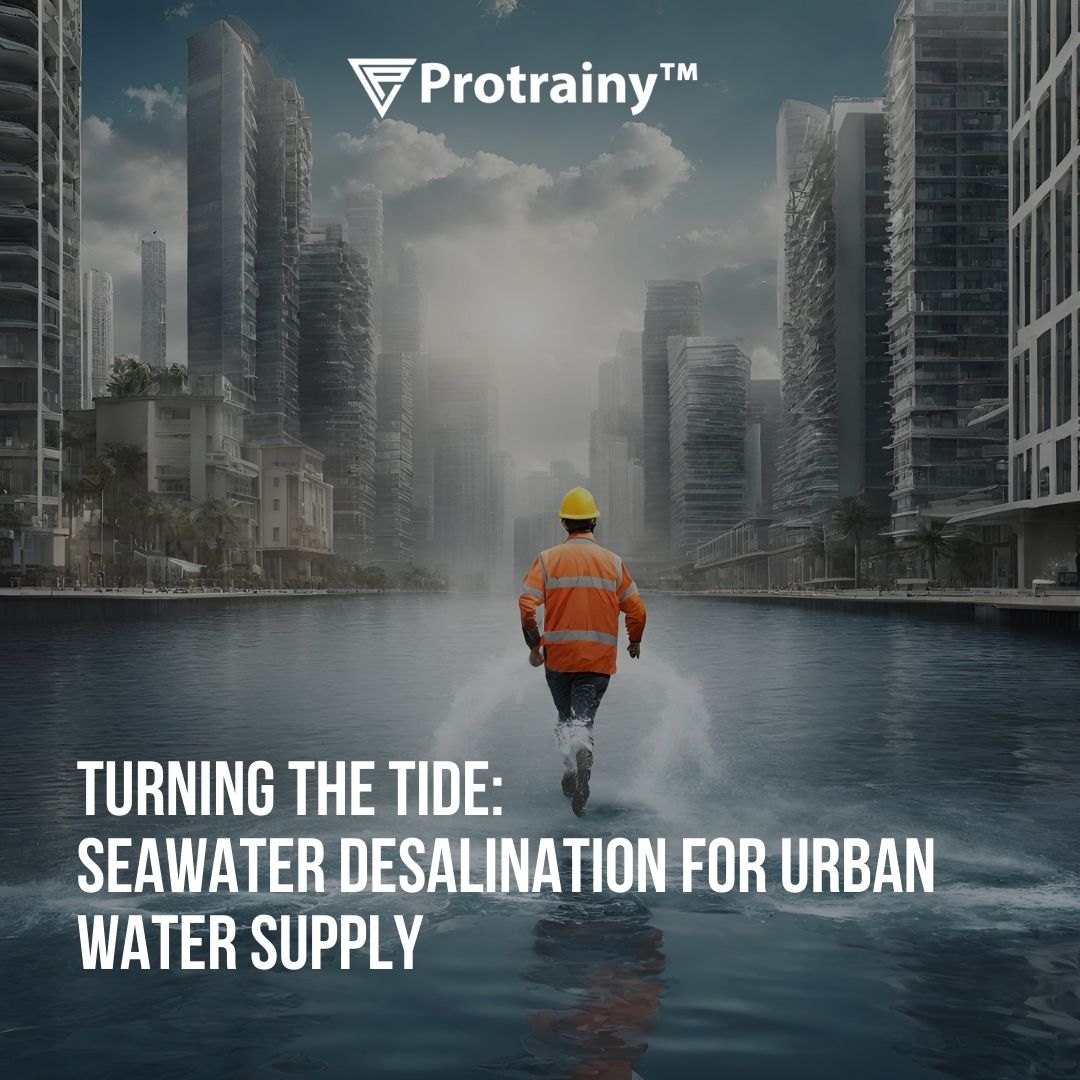Blogs
- Home
- Blogs
Turning the Tide: Seawater Desalination for Urban Water Supply
Protrainy | Sept. 4, 2023, 1:27 p.m.

Introduction:
Water is the lifeblood of cities, fueling growth, sustaining life, and ensuring prosperity. However, with rising populations and increasing demands, many urban areas are facing water scarcity. To quench this thirst, cities are increasingly turning to an unconventional source—seawater. Seawater desalination, the process of turning ocean water into freshwater, has emerged as a sustainable solution to urban water supply challenges. In this blog, we'll dive deep into the world of seawater desalination, exploring its real-world applications, sustainability considerations, and the unique challenges it presents in the quest to provide clean, reliable water to urban populations.
Thirsty Cities: The Urban Water Challenge
Urbanization is on the rise, with more than half of the world's population now living in cities. This rapid urban growth places immense pressure on local water resources. As a result, many cities face a dual challenge: securing a reliable water supply for their residents while mitigating the impacts of climate change-induced water scarcity.
1. Seawater Desalination Unveiled: Harnessing the Oceans
Seawater desalination is a process that removes salt and impurities from seawater, rendering it safe and suitable for drinking and other uses. The most common desalination methods are distillation and reverse osmosis.
2. Reverse Osmosis: A Molecular Filter
Reverse osmosis is the most widely used desalination method. It involves forcing seawater through a semi-permeable membrane that allows water molecules to pass through while blocking salt and impurities. The result is freshwater on one side of the membrane and concentrated brine on the other.
3. Distillation: Mimicking Nature's Cycle
Distillation desalination mimics the natural water cycle. Seawater is heated, causing it to evaporate, leaving the salt and impurities behind. The vapor is then condensed back into freshwater.
4. Energy Requirements: The Desalination Dilemma
Desalination is an energy-intensive process. It requires significant amounts of electricity or thermal energy to drive the distillation or reverse osmosis processes. Finding sustainable energy sources to power desalination plants is a key consideration.
5. Environmental Impact: Brine Disposal and Marine Life
One of the most significant challenges of desalination is the disposal of concentrated brine, the byproduct of the process. Discharging brine back into the ocean can harm marine ecosystems due to its high salinity. Developing sustainable brine management solutions is crucial.
6. Cost Considerations: Balancing the Budget
Desalinated water is generally more expensive than freshwater from traditional sources like rivers or reservoirs. The cost of desalination is influenced by factors such as energy prices, plant size, location, and the technology used.
7. Case Study: The Carlsbad Desalination Plant
The Claude "Bud" Lewis Carlsbad Desalination Plant in California, USA, is one of the largest and most advanced desalination facilities in the Western Hemisphere. It produces 50 million gallons (190,000 cubic meters) of freshwater per day, serving approximately 400,000 people. The plant uses reverse osmosis technology and is powered by both electricity and renewable energy sources.
Impact and Beyond: Sustainable Solutions for Urban Water
The impact of seawater desalination extends beyond immediate water supply needs. It provides cities with a reliable source of freshwater, reduces pressure on dwindling freshwater sources, and enhances resilience against droughts and climate change.
Conclusion: Navigating the Salty Waters
Seawater desalination represents a transformative solution to the urban water supply challenge. As cities continue to grow and water resources become scarcer, desalination offers a sustainable path forward. However, it is not without its complexities, from the energy required to the environmental impacts. To navigate these salty waters successfully, cities must invest in innovative technologies, sustainable energy sources, and responsible brine disposal methods. In doing so, they can secure a brighter, water-abundant future for their residents, turning the tide on urban water scarcity and ensuring that thirsty cities are never left high and dry.
